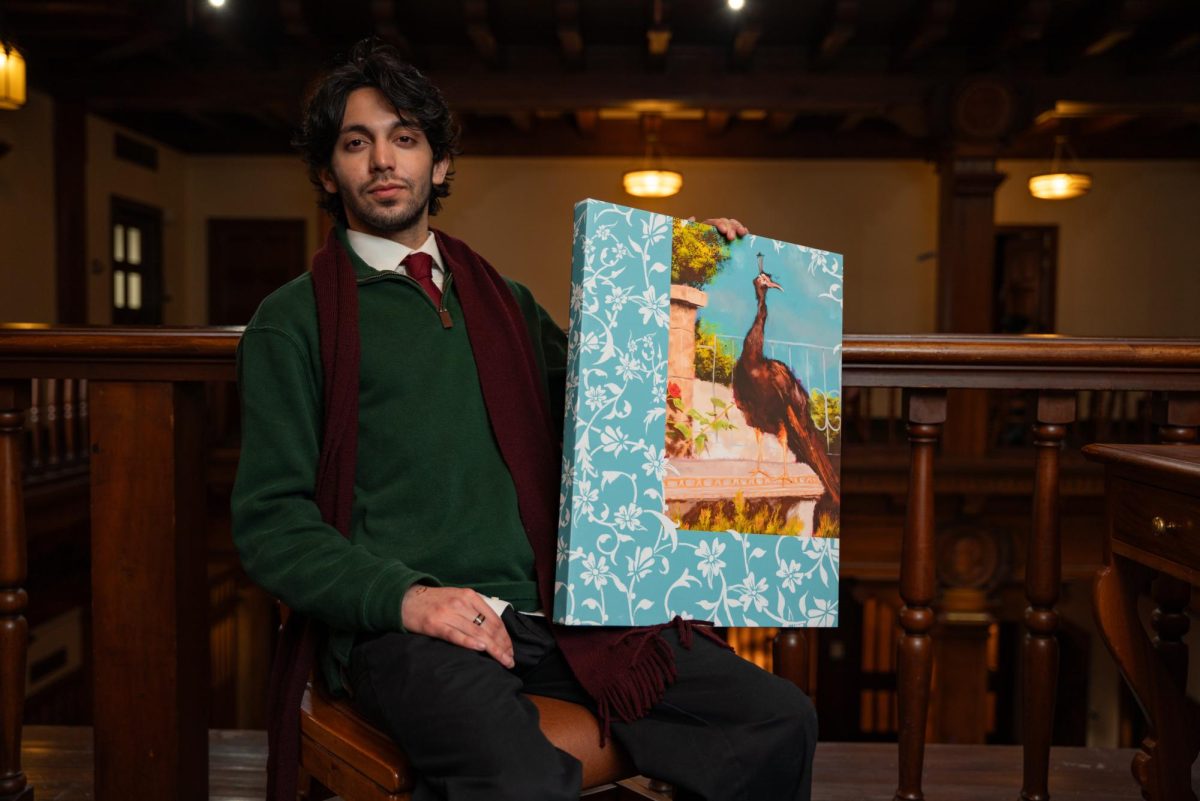[Updated at 10:53 p.m., removed claim to being only instructional trapeze school in the central U.S.]
Margret Johnson lets out a shrill scream as she jumps off of the platform, both hands firmly gripping the swinging bar. As body positions are called to her from the ground, she matches the timing as the bar swings overhead before finally releasing her grip and, with the aid of the momentum, does a backward flip into the net below.
“Oh my goodness, it’s terrifying. It’s so hard,” Johnson said after her first attempt at the flying trapeze. “It’s so fast. It’s hard to know what to do at the right time.”
Flying trapeze has been around for more 150 years, but Trapeze Austin only started two years ago. Owner Russell Torretto learned the art form nine years ago while in Mexico working on a circus set design. The trapeze artists noticed him and waved him over to try it. He said he’s been hooked ever since and even traveled the country performing with small circuses before working his way into The Ringling Brothers.
“I was taught by circus families how to perform, but when I started teaching, I had to relearn a more domestic approach,” Torretto said.
With the assistance of Cassandra DeBakey, Kris Sundberg and Jay-Bird Gibson, Torretto has been teaching beginner to intermediate level flying trapeze for the last five years.
“Circus arts are completely different and illogical,” Torretto said. “It’s a unique process we teach you — it’s all about what you do with your body during the float.”
Although uncommon to practice indoors, Torretto has a makeshift net he built himself that hangs above an indoor soccer playing field.
The lessons have a routine structure that has been able to teach those who have never taken a flying trapeze class and reinforce previous lessons for those that have been coming for years. Beginning with simple stretches followed by a demonstration of the desired trick by the instructors, the students then practice on a low swinging bar with assistance. Once the safety belts are secure, they climb the ladder to a 25-foot platform and attempt the trick they have seen and attempted at the lower level.
“If your head is up and your hips are forward, you can do anything in trapeze,” Torretto said. “All of the tricks happen at the apex of the swing.”
As soon as the students reach the platform, listening becomes key. The instructors are pulling on the safety lines while calling out specific instructions at the exact peak of the swing of the bar while the students try to match their body movements to the instructions.
“It’s nothing about thinking; it’s about getting the feeling, the swing, the weightlessness,” Torretto said. “Once you accomplish that, it’s a great feeling.”
Unlike gymnastics, the bar swings toward and away from the flyer making each movement in each trick all about timing and fluidity of motion. All of the instructors stress looking at your hands before, during and after the swing to prevent flipping the wrong way over the bar.
“Less is more when it comes to body movement,” Torretto said. “There’s no physical strength — you don’t want to use muscles when you learn trapeze, that comes later.”
Torretto recommends anyone with a fear of heights to come out and try the art. He believes it’s only by standing on the edge of the platform with the safety belt on that one will conquer these fears and also embrace them.
“We use it as a metaphor to face fears that you wouldn’t expect to face, and ultimately they leave with a product they never expected,” Torretto said.
Since its opening, Trapeze Austin hasn’t had a single injury. The instructors attribute their overall safety to their attention to detail and hope to remove the misconceptions concerning the safety behind the flying trapeze.
“They see flying trapeze and they think of falling, breaking a neck, but it’s safer than your drive over here,” Torretto said. ”We’re more keen on details. We pay attention to the little things that most people never think of.”
A majority of the clientele are women in their early 20s to 40s, but all of the instructors believe the art isn’t limited to women or a specific age range. A Boy Scout troop came recently, and all of them learned each skill and immediately wanted to return to the class.
“When most people come, they say they’re going to try it once, but they keep coming back,” Torretto said. “Every time they come back, they realize their bodies are capable of doing more and more.”
Originally, it was these same sentiments that hooked Torretto. He loved the pain and the physical challenge the art presented him. He tries to instill this same sense of passion into each of his lessons so his students will leave with the same love for the trapeze.
“The feeling is indescribable, and everyone around you is a professional artist,” Torretto said. “What stops a lot of people is the mind, so I tell them to just go for it.”
Printed on Monday, October 3, 2011 as: Trapezist brings art of flying to Austinites




















